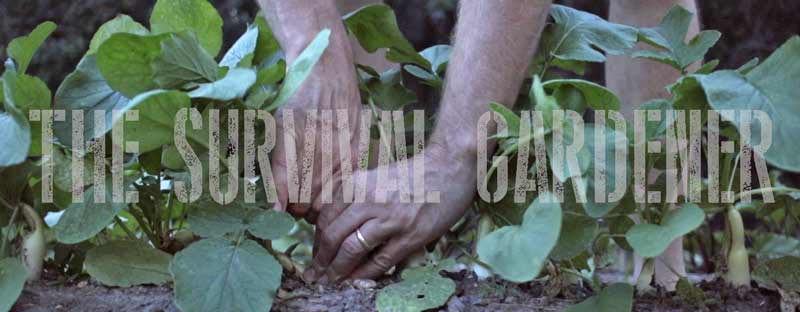Last week I tackled a new landscaping project: a small, neglected landscape bed at the edge of a restaurant.
The outer edge had some struggling succulents in it, so I pulled them out:
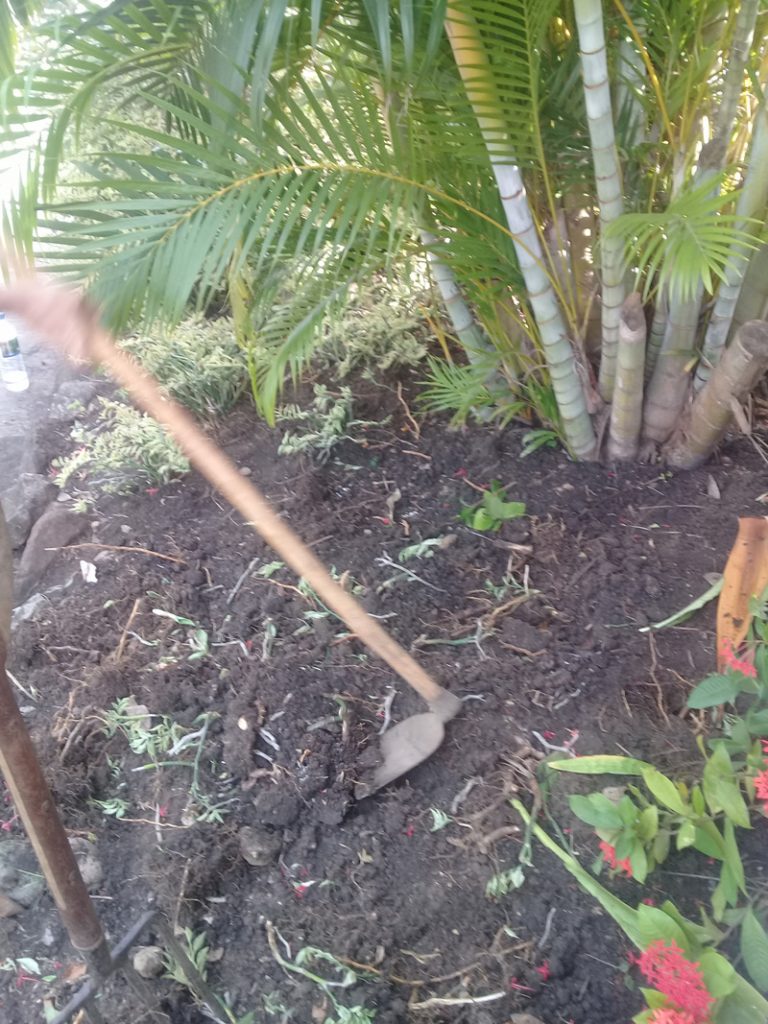
To replace them, I added wandering Jew, a fast-running, tough perennial. I found a bunch of them growing in the jungle along the entrance to a nice neighborhood and took cuttings.
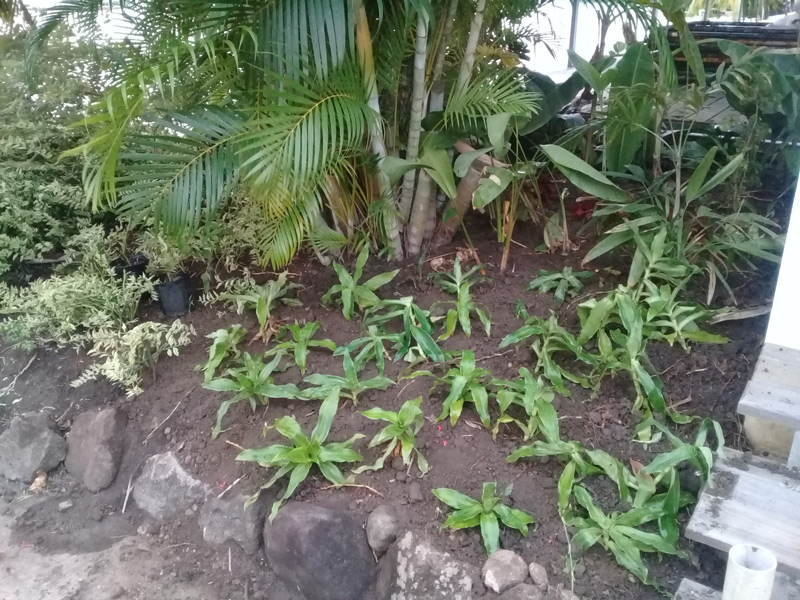
That will grow into a thick mat of green before too long.
At the edge of the restaurant deck was a shady and very patchy area that needed serious help. Here are the before shots:
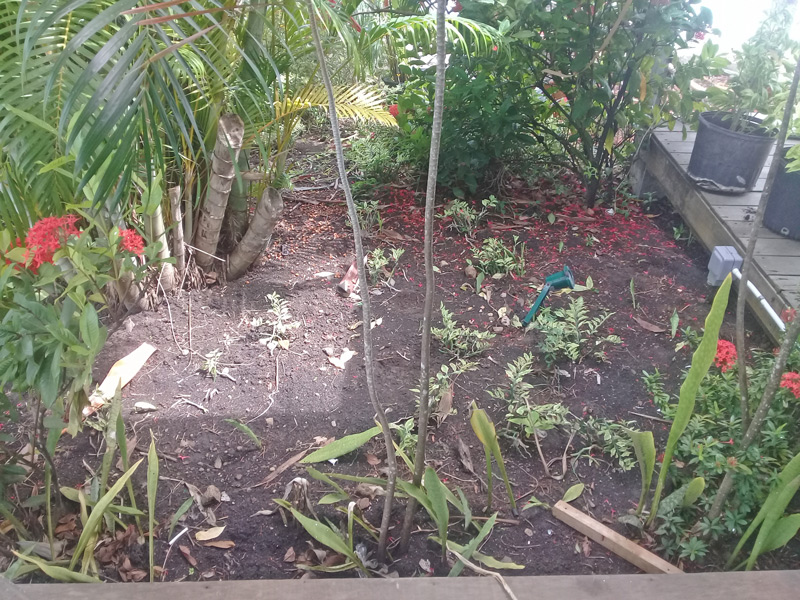
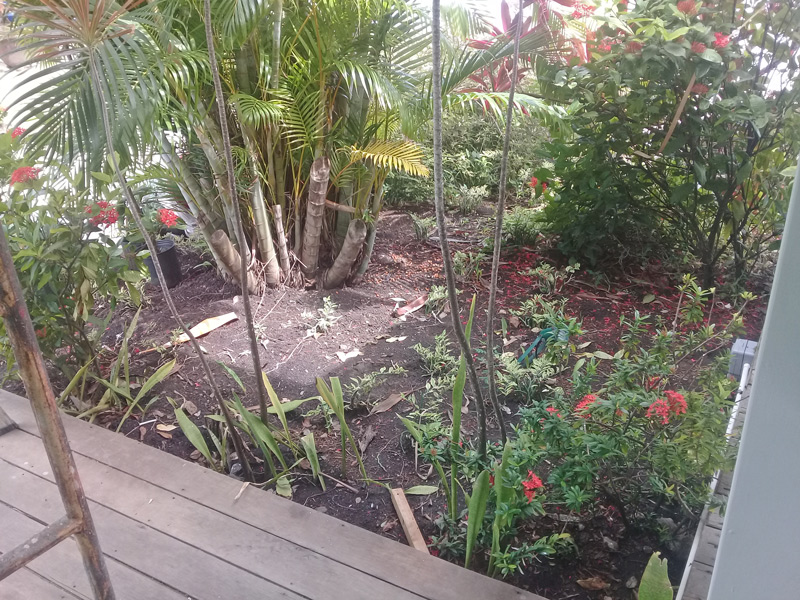
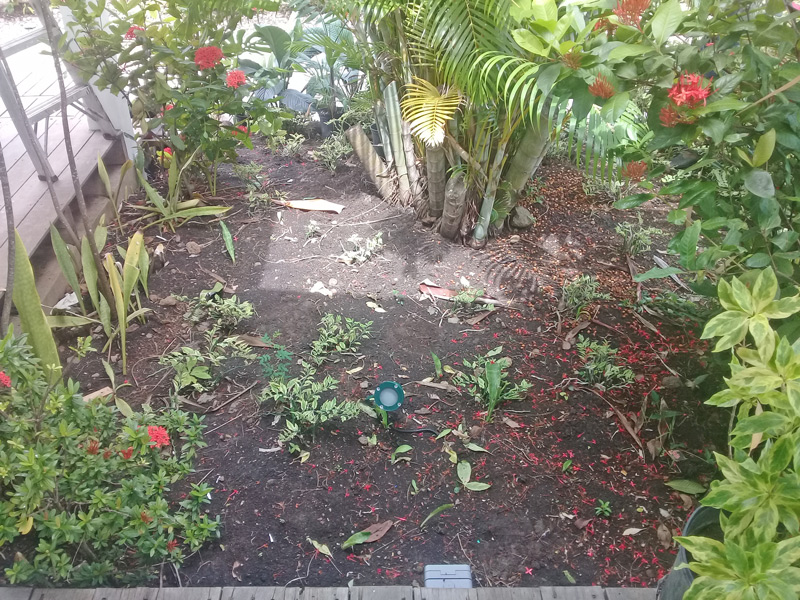
And the after shots:
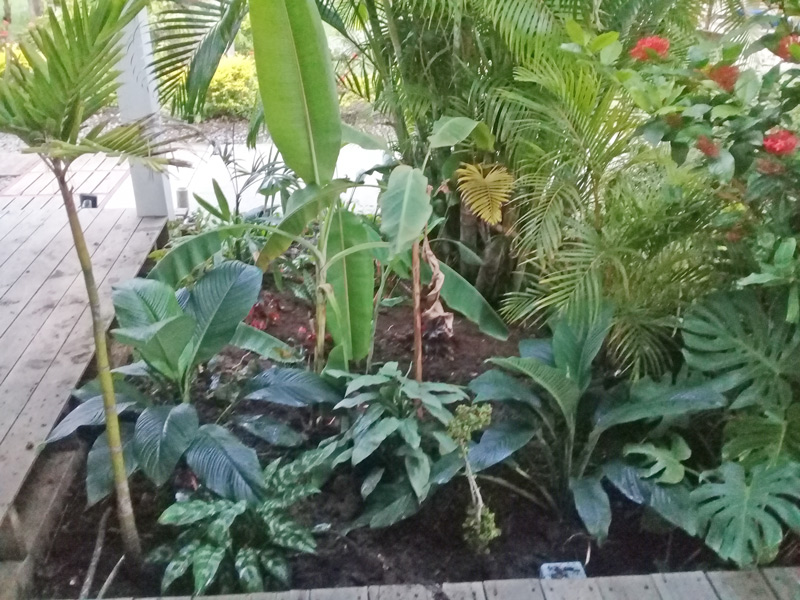
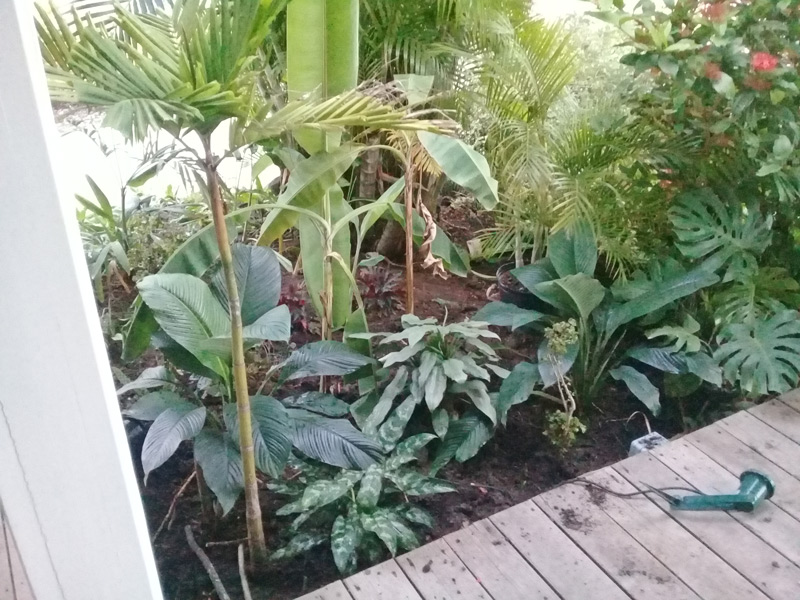
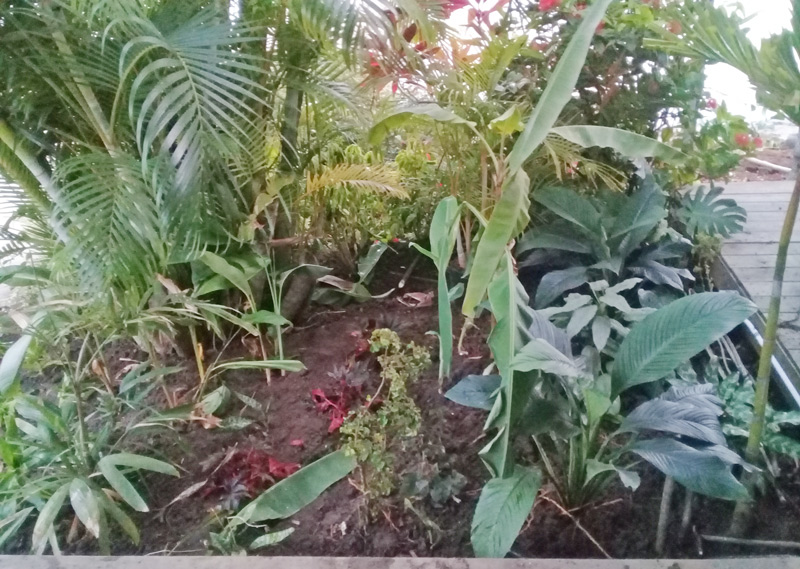
The density will increase over time as the plants grow. In fact, they’re planted a bit close right now. The restaurant was closed for just a week for renovations and the new management wanted it to look good right away, hence the closer plantings.
The little red plants you can see towards the left are a huge-leafed begonia that likes the shade. They’ll look a lot better once they grow. Right now they’re tiny.
After taking the last set of photos, I added mulch to the area and it looks excellent now. Nothing edible in the mix (the monstera you can see peeking out in the back was later moved), but this is deep shade and also near the sea, so it’s not idea for much of anything that would both make food and look good. I spent about $187USD on plants to get nice, larger specimens. In the middle, I planted some small heliconias and ornamental bananas I found growing in the shade at one edge of the property. I also added the frilly leafed aralia in the middle, which I found elsewhere.
I like the final effect. Density makes a big difference in maintenance and looks, as it keeps the weeds down to nonexistent levels by filling in all the gaps where they might show up.
This is my goal for these dead areas in the landscaping.
Thick, lush, tropical rainforest style. When young, the plants will be mulched, protecting them from weeds. Later, they probably won’t even need that.
